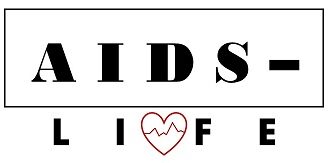Condoms to prevent HIV infection
Does a condom protect against HIV? Read our article and you will learn about how effective condoms are and how to use them correctly to prevent the risk of contracting HIV.
Does a condom protect against HIV infection?
Many people ask the question: “ Does a condom protect against HIV?” ". The answer is yes, because condoms are a physical barrier that helps reduce the risk of contracting HIV through sexual contact because they are made of materials that prevent the virus from entering the human body. This makes condoms an effective way to reduce the risk of HIV transmission, but only if contraception is used correctly and consistently. Condoms also provide protection against other sexually transmitted infections (STIs).
There are two types of condoms that prevent the possibility of contracting HIV through sexual contact:
- External condom or male condom. It is a cover made of thin rubber, worn on the male penis. The shell is usually made of polyurethane, latex or polyisoprene;
- Internal condom or female condom. It is a pouch made of polyurethane or nitrile inserted into the vagina. The internal condom was originally designed for vaginal sex, but can also be used for anal sex. The pouch is open at one end and closed at the other, with a flexible ring at both ends. A ring at the closed end is inserted into the vagina or anus to hold the condom in place. The ring at the open end of the pouch remains outside.
Condoms help prevent transmission by reducing the chance of contracting HIV through sexual contact.
Laboratory studies show that the materials used to make most condoms (such as latex, nitrile, polyurethane and polyisoprene) do not allow HIV to pass through them. Thus, condoms serve as an effective barrier to HIV infection.
Using condoms correctly
It is important to use condoms correctly because improper use can damage the condom during sex. This significantly reduces the effectiveness of the condom, allowing HIV to enter the body.
To minimize the risk of condom damage and increase the effectiveness of condom use, you must:
- choose condoms of the appropriate size;
- store condoms at room temperature and regularly replace condoms kept in a wallet or pocket;
- do not use expired condoms;
- make sure that the packaging is not damaged and open the packaging carefully, without using sharp objects;
- use a new condom every time you have sexual intercourse;
- use condoms during the entire duration of sexual intercourse;
- put on and remove the condom according to the instructions.
If used correctly, the risk of contracting HIV with a condom is reduced to zero. Therefore, when using a condom, follow the instructions:
- Carefully open the package so that the condom does not break;
- Make sure the condom is positioned correctly on the penis;
- Pull out the foreskin of the penis;
- Squeeze the tip of the condom (to remove air and leave room for sperm to collect) and pull it over the erect penis all the way to the base;
- apply sufficient lubricant (only water-based or silicone-based lubricants should be used with latex condoms; saliva should not be used as lubricant);
- immediately after sex, hold the condom while removing the penis from the vagina or anus;
- carefully remove the condom from the penis only when there is no contact with the partner’s body, and make sure that the sperm does not spill;
- Dispose of the condom safely.
The correct way to use an internal or female condom is:
- Carefully open the package so that the condom does not break;
- Apply lubricant to the outside of the closed end;
- Squeeze the sides of the inner ring at the closed end of the condom and insert into the vagina or anus;
- Insert the inner ring into the vagina or anus until it stops, while the outer ring should be on the outside;
- If during sex the outer ring is pushed into the vagina or anus, stop and push it back into place;
- Make sure that the penis fits into the condom and does not pass between the condom and the wall of the vagina or rectum;
- Immediately after sex, gently twist and pull the end of the condom to remove it, being careful not to spill semen into the vagina or rectum;
- Dispose of the condom safely.
Advantages and disadvantages of condoms
Condoms are an effective way to help prevent sexual transmission of HIV when used correctly and consistently. Condoms have been extensively studied in laboratory tests and have been found to be impervious to HIV, meaning that the virus cannot enter the human body through them.
There is a possibility of contracting HIV if a condom breaks. However, cases of mechanical damage to condoms are relatively rare: according to statistics, external condoms break in 0.4-6.5% of cases, and internal condoms - in 0.1-5.6% of cases.
Condoms have a number of advantages over other methods of preventing HIV infection. Here are some of them:
- Condoms are one of the most reliable ways to help prevent the transmission of HIV;
- Condoms reduce the risk of contracting other sexually transmitted infections such as gonorrhea, chlamydia, herpes and syphilis;
- there is a wide range of condoms on the market to suit every taste and budget;
- Condoms help reduce the risk of unwanted pregnancy.
However, condoms also have a number of disadvantages that can make them difficult to use correctly and regularly. For example:
- many people do not know how to use condoms correctly, which significantly reduces the effectiveness of their use;
- often, it is not so easy for a person to agree with his sexual partner on the use of a condom;
- in some cases, condoms have a negative effect on male erection;
- Condoms may be uncomfortable and reduce sexual pleasure;
- When condoms are used to prevent HIV, they eliminate the possibility of conceiving a child.




